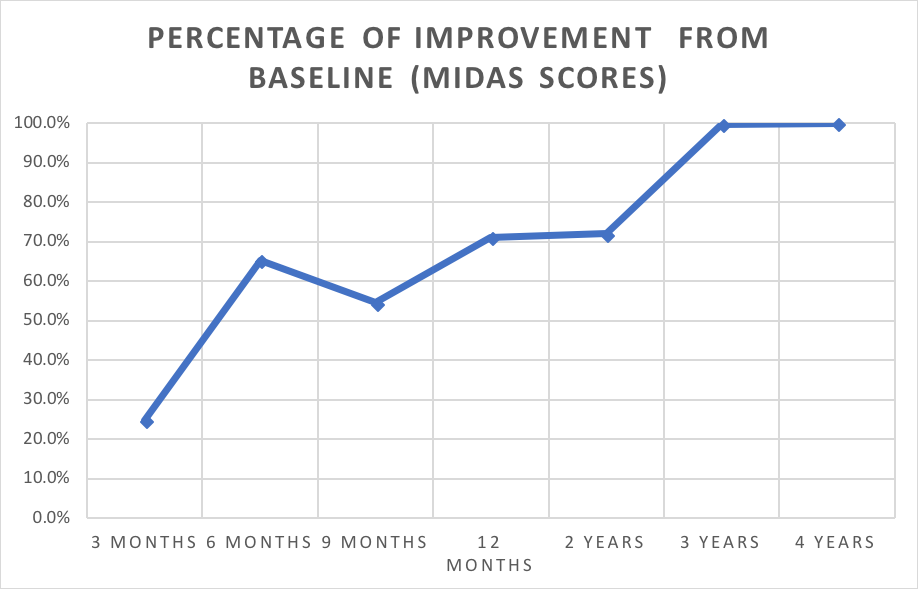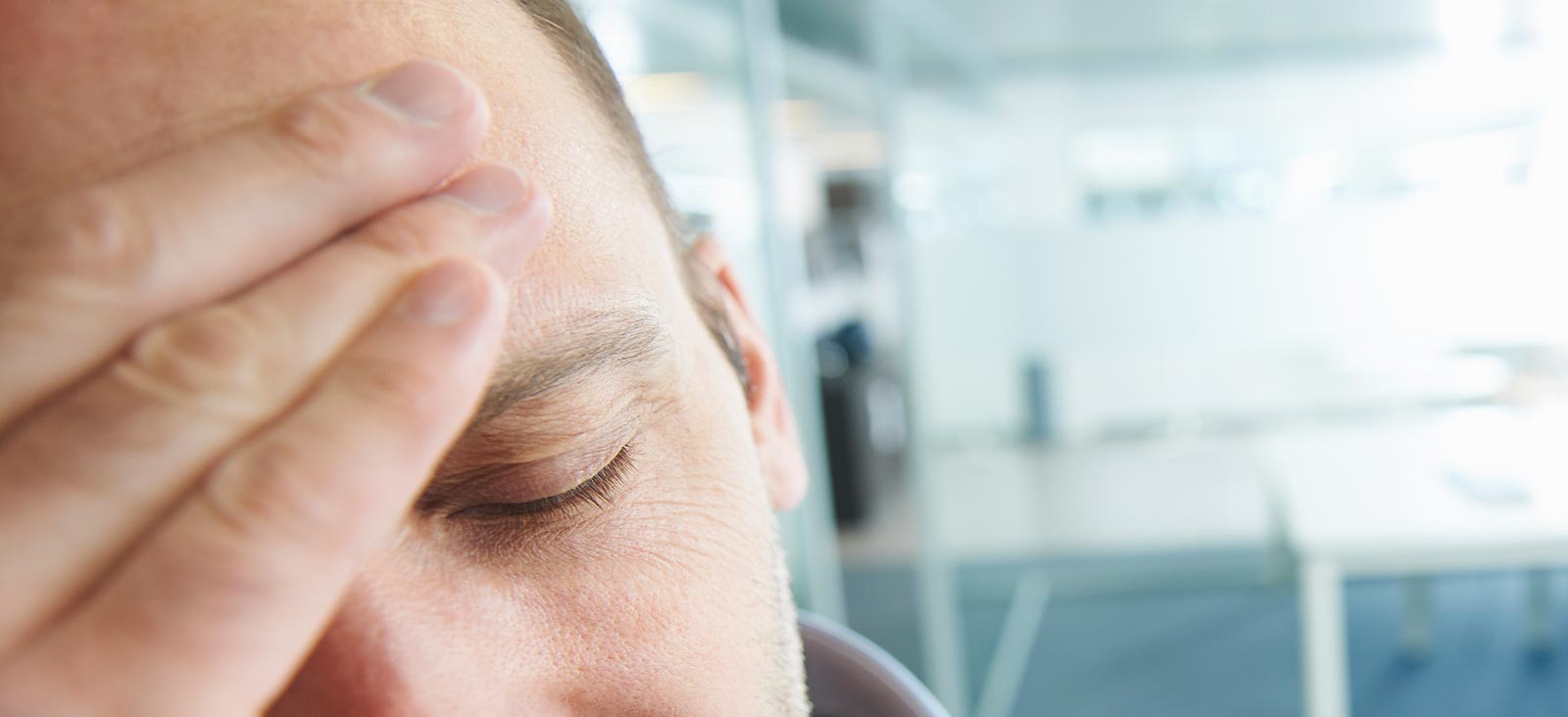Migraine Quality Outcomes
New Patient Appointment or 214-645-8300
UT Southwestern’s Department of Plastic Surgery, in conjunction with the Ambulatory Quality Outcomes and Performance Improvement team, are working to analyze the outcomes of patients treated with Anatomical Regional Targeted (ART) Botox injections and migraine surgery. These quality outcomes projects involve collecting information from patients via the Migraine Headache Index (MHI) and the Migraine Disability Assessment (MIDAS). Using these standardized methods of assessing migraine headaches and their related disorders will allow us to understand how our patients are benefiting from our interventions.
Anatomical Regional Targeted (ART) Botox Quality Outcomes
Our quality data involving Dr. Bardia Amirlak’s ART Botox technique have been published and show that patients have significant improvement in their migraine headache symptoms with this method.
The ART Botox technique is a comprehensive paradigm that utilizes fewer units of Botox than the traditional method of 155 units of Botox injections for migraines in select patients. The injections are tailored according to each patient’s description of the site of pain. Unlike the traditional method, Botox is not injected into areas that do not have pain, thereby saving clinic and patient costs. This increases compliance and decreases complications.
Amount of Botox injected at each site:
- Above brow: 19-25 units
- Temporal region: 12.5 units
- Base of skull: 25 units
- High temporal area: 2.5-5 units
- Border of TMJ: 2.5-5 units
Measures in which we assess quality are: compliance, long-term improvement, and average long-term improvement.
- Pre-Botox MIDAS Compliance (Baseline): Measured as the percentage of patients who have completed a MIDAS questionnaire prior to their first Botox injection
- Post-Botox MIDAS Compliance: Measured as the percentage of patients who have completed a MIDAS questionnaire after a Botox injection
- Long-Term Improvement: Percentage of patients who have had greater than 50 percent improvement in MIDAS score in comparison to baseline MIDAS score
- Average Long-Term Improvement: Percentage of patients who have had an average greater than 50 percent improvement in MIDAS score in comparison to their baseline MIDAS score
Another method of assessing migraine headache severity is obtaining an MHI. This is composed of frequency of migraine headaches, duration (in days) of migraine headaches, and severity on a scale of 1-10. Utilizing this data, we have seen a significant decrease in the MHI at 24 weeks after injection.

Frequency graph: Representing change in frequency of headache days prior to ART Botox treatment (pre-treatment), at 24 weeks after Botox treatments, and at 56 weeks after Botox treatments. Botox was given every three months during this time period.
Duration graph: Representing duration of headaches, measured in days. Prior to treatment with ART Botox (pre-treatment), subjects indicated an average migraine headache lasting 1.04 days. At 24 weeks, migraine headache duration decreased to 0.46 days, and at 56 weeks it decreased to 0.36 days.
Severity graph: Indicating changes in severity of migraine headaches on a scale of 0-10, 10 being the worst pain. Prior to treatment with ART Botox, average pain of patients was 8.3. After 24 weeks of ART Botox treatment, pain decreased to an average of 3.38, and at 56 weeks pain decreased to 3.2.

The graph above shows the mean change in migraine days/month at each injection cycle. After just one injection, migraine days per month decreased on average by 12 days (p<0.0001). After two injection cycles, migraine days per month decreased by 18 days (p<0.0001) compared to baseline. After the second injection cycle, change in migraine days per month remained stable.
Migraine Surgery Outcomes
Our quality outcomes data measuring the success of migraine surgery treatment officially began in 2015. For this outcome, the primary assessment tool is the MIDAS questionnaire, which assesses the effect of migraines on daily function. Our data is only preliminary and is on an ongoing basis. Patients receiving migraine surgery are followed up for 10 years.
Measures in which we assess quality are: compliance, six-month, and 12-month improvement.
- Pre-Surgery MIDAS Compliance: Measured as the percentage of patients who have completed a MIDAS questionnaire prior to their first surgery
- Post-Surgery MIDAS Compliance: Measured as the percentage of patients who have completed the latest MIDAS questionnaire in the series of questionnaires after surgery
- Six-month Improvement: Percentage of patients who have had greater than 50 percent improvement in MIDAS score at six months after surgery.
- 12-month Improvement: Percentage of patients who have had greater than 50 percent improvement in MIDAS score at 12 months after surgery.

This graph shows the percentage of improvement in MIDAS at various timepoints after surgery. The collection of this data is ongoing and represents only a small portion of our patient population. This data is not representative of the entire patient population seen in this clinic for migraine headache treatment and includes the responses of only those who answered the MIDAS questionnaire. The data presented here are for use only by the Department of Plastic Surgery at the University of Southwestern Medical Center.
Migraine surgery and Botox treatment for migraine headaches are two options offered by Dr. Amirlak for the treatment of migraine and chronic headache conditions. Please make an appointment to see Dr. Amirlak if you wish to discuss these options further. Collaboration and ongoing treatment with your neurologist and headache specialist are important because surgery and targeted Botox injection are only some of the tools in a broader comprehensive treatment paradigm for migraines.

